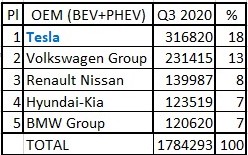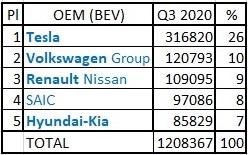It is possible that the FSD beta is being trained on a partially built Dojo.
Final Dojo can apparently train 3 times per day.
Yes, in theory that could mean daily updates.
The other thing that might be different is they can just update the NN weights produced by training without a software update.
Prior to Dojo training takes longer. 7 days?
If this is true, as Dojo is progressively built, training will accelerate, improved versions will come faster.
1. Using Dojo as opposed to the existing trainer they may be moving from running training in 72h to running [the same] training in 7h, but
2. They are not running the same training, if only because they are shifting from '2.5D' to '4D'. and we are unsure if the 72h > 7h is a like-for-like comparison or also takes the 2.5>4D shift into account, and
3. But anyway as they shift more and more of the driving task into the central network, as opposed to being in separate modules, then the training task becomes larger. At least it does until a portion becomes sufficiently solved that it can be set aside for a while (i.e. training sessions will concentrate on other aspects until they too are sufficiently solved, then they will iterate around the mission space picking up edge cases in some sort of priority sequence).
4. Dojo shouldn't be thought of as being one monolithic computer. For sure it may (??) be capable of operating in that manner, but more likely it will be better to think of it as several computers each of which addresses part of the training process, e.g. self-labelling; running training; edge-case identification; etc.
5. It is unlikely that they will ever just dump new netweights in during a software update. They would almost always want to restructure the net.
6. But bear in mind it is over 30-years since I last worked on NN controllers (boy does that make me feel old), but I don't think the issues have changed (because we could see these issues even back then).
7. It is great to see all this coming to fruition.
8. Have a think about this for a moment. For about the next 10-years, the essential barrier to entry in the FSD game - quite apart from amassing the required data sets and feedback loops - is the ability to design/build/operate one of the world's largest supercomputers, either using mission-specific chipsets or paying extra for the overhead of generic chipsets. At any given moment there are probably only about a couple of dozen organisations able to play in that league, and only a handful of them will be in the first division, and most of them have other objectives (aerospace, nuclear, whatever) and there are only so many people that are viable hires for these organisations. The barrier to entry for competitors will likely get bigger, not smaller, for the next ten years (as competitors need to be comparable to Tesla before being able to credibly launch in the FSD marketplace).
regards, dspp/pp





